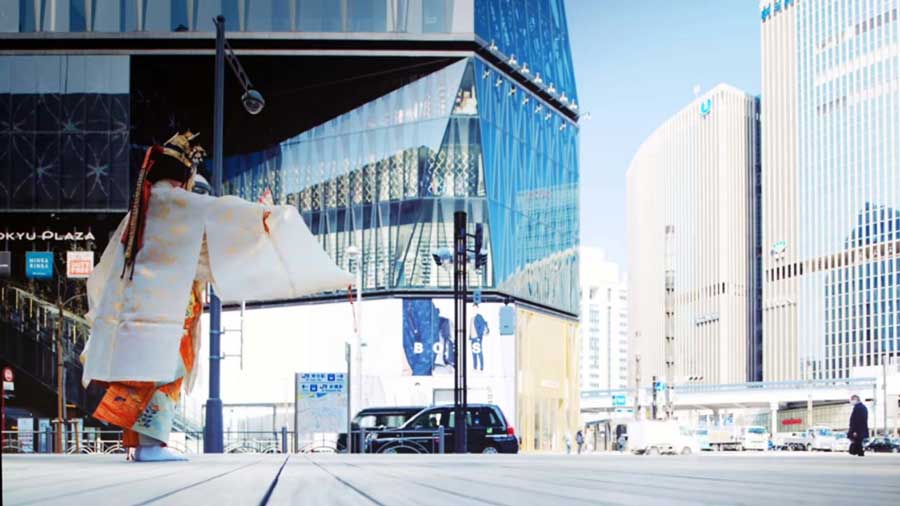
By David Yamaguchi The North American Post
Okuyama ni
momiji fumiwake
naku shika no
koe kiku toki zo
aki wa kanashiki
Deep in the mountains,
striding through tinted leaves,
a stag calls out —
and oh, when I hear its cry,
I know the sadness of autumn.
— Sarumaru Dayū
As was apparently also felt by our 10th century ancestors, the warmth of summer has come and gone too quickly, and the cool dawns and evenings of autumn approach. In this season, we find that we have sadly forgotten much of what we learned the last academic year. Here, I am referring to our lessons from UW Japanese literature professor Paul Atkins on Rakugo, Japanese sit-down humor (Oct. 2020), and on the poetry of the 13th-century Hyakunin Isshu (100 poems by 100 poets, Feb. 2021). Nonetheless, this month he proposes to forge ahead, in the way that sensei do, stretching our rusty minds yet further. He will introduce us to Noh classical Japanese theater in a 7 p.m. online lecture on September 22nd (events.uw.edu/WhatIsNoh).
“Oh Noh!” we cry.
But before we despair further, let us pause to take stock of what we know about Noh as Seattle Japanese Americans. When I think of Noh, I think first of its wooden masks. I also have the impression that the art form is really slow moving. After all, isn’t it what the castle lord and his court are sitting around watching, in samurai films when the bad guys burst in, set all in ruin, thereby launching the storyline?
I also remember, from my Japanese school days, that unlike moviegoers, Noh audiences attend plays mainly to see the artistry of play performances, for they already know the basic storylines. In this way, JAs are not so disadvantaged.
Readers of this column may remember the famous ancient play, “Hagoromo” [The Robe of Feathers], which we visited in this column a few years back. This most charming tale comes down to us from Noh. I first heard it narrated by an innkeeper at a ryokan in the coastal village of Miho, Shizuoka, where it is said that the fisherman encountered the angel bathing on that very beach, her robe dangling from a tree branch.
Incidentally, people there asked me if I knew any families named Endo in the U.S.
“They probably came from our village,” they said.
In this space, we have also reviewed the story of Atsumori, which is also a Noh play (SJ, “Japan Sea Roots”). And who among us has not heard the tale of Obasute, the old lady abandoned in the mountains, so her fellow villagers could survive the winter? There is Rashomon, which the internet tells us was a Noh play before it was a movie. And there is the fable of Urashima Taro, a man left behind by the passage of time, which is also a Noh play, “Urashima.”
So despair not, dear reader! We know more Noh than we think we do. Like UW student Benjamin Narkmon (Aug. 13), we just need gentle guidance.
To see if Noh works for you or not — it is not everyone’s cup of ocha — we must move from its plots to its actual performance. I recommend starting with the seven-minute Noh video on YouTube channel “Hibiya Fest 2021.” It features performer Takeda Munenori, who will star in the second Washin Kai and UW-sponsored online Noh event of October 13. The video juxtaposes his ponderous Noh movements against the backdrop of present-day urban Tokyo. Around him, trucks pass, pedestrians walk, etc. It is intriguing because close-ups allow us to see Takeda singing the narrative while the street scenes make us wonder why passersby don’t disturb the action or its filming.
Washin Kai and UW Asian Languages and Literature (asian.washington.edu/news)
1. “What is Noh?” Wed Sep 22, 7 – 8:30 PM
2. “World of Noh Drama with Takeda Munenori,” Wed Oct 13, 7–8:30 PM







